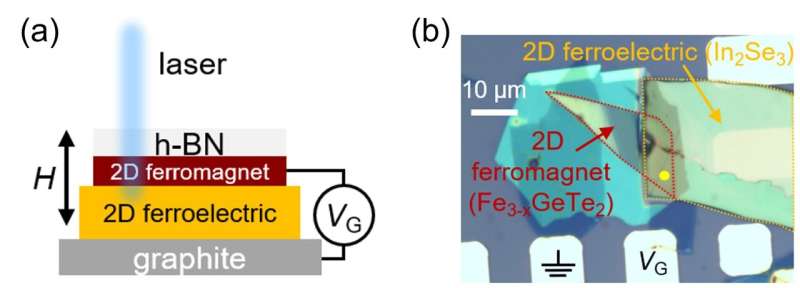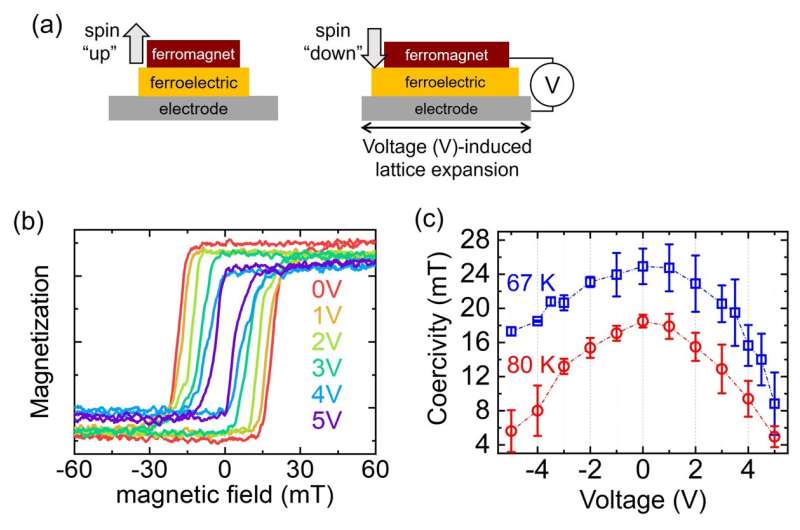This article has been reviewed according to Science X's editorial process and policies. Editors have highlighted the following attributes while ensuring the content's credibility:
fact-checked
peer-reviewed publication
trusted source
proofread
Quantum material-based spintronic devices operate at ultra-low power

As artificial intelligence technologies such as Chat-GPT are utilized in various industries, the role of high-performance semiconductor devices for processing large amounts of information is becoming increasingly important. Among them, spin memory is attracting attention as a next-generation electronics technology because it is suitable for processing large amounts of information with lower power than silicon semiconductors that are currently mass-produced.
Utilizing recently discovered quantum materials in spin memory is expected to dramatically improve performance by improving signal ratio and reducing power, but to achieve this, it is necessary to develop technologies to control the properties of quantum materials through electrical methods such as current and voltage.
Dr. Jun Woo Choi of the Center for Spintroncs Research at the Korea Institute of Science and Technology (KIST) and Professor Se-Young Park of the Department of Physics at Soongsil University have announced the results of a collaborative study showing that ultra-low-power memory can be fabricated from quantum materials. The findings are published in the journal Nature Communications.
By applying a voltage to a quantum material spintronic device consisting of two-dimensional material heterostructure, it is possible to read and write information at ultra-low power by effectively controlling the spin information of electrons.
Two-dimensional materials, which are representative quantum materials, can be easily separated into planar layers of single atoms, unlike ordinary materials that have a three-dimensional structure, and thus exhibit special quantum mechanical properties.
In this study, the researchers developed a two-dimensional heterostructure device that combines quantum materials with two different properties for the first time. By applying voltage as low as 5 V to a device consisting of a two-dimensional ferromagnetic material (Fe3-xGeTe2) and a two-dimensional ferroelectric material (In2Se3) stacked on top of each other, the magnetic field required to change the spin direction of the ferromagnet, i.e., the coercivity, can be reduced by more than 70%.

The researchers also found that the structural changes in the two-dimensional ferroelectric that occur when a voltage is applied lead to changes in the spin properties of neighboring two-dimensional ferromagnets.
The lattice of the two-dimensional ferroelectric expands with voltage, changing the magnetic anisotropy of the adjacent ferromagnet and greatly reducing the coercivity required to reorient the spin. This means that by applying a very small voltage to a quantum material heterostructure device, it is possible to control the spin information of electrons even with an approximately 70% reduced magnetic field, which is a key technology for the development of ultra-low-power spin memory based on quantum materials.
"By securing ultra-low-power next-generation memory core element technology using quantum materials, we will be able to maintain our technological edge and competitiveness in the recently faltering semiconductor industry," said Dr. Jun Woo Choi of KIST.
More information: Jaeun Eom et al, Voltage control of magnetism in Fe3-xGeTe2/In2Se3 van der Waals ferromagnetic/ferroelectric heterostructures, Nature Communications (2023). DOI: 10.1038/s41467-023-41382-8
Journal information: Nature Communications





















